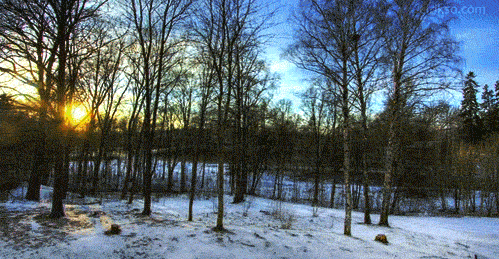
Fast-Forward Fall
Some years we ease into winter - other years snow & windchill arrive suddenly, like a cold slap across the face. This will be one of those autumns. Payback for an August-like September? Maybe. I've found that unusually warm spells are often followed by equally cold surges as the atmosphere tries to reach equilibrium.
But none of us should be surprised or indignant. We're 2 months away from the Winter Solstice; the sun as high in the sky as it was in late February. When people complain I ask them to track their GPS location on a map of North America. Are you really surprised?
An Alberta Clipper pushes a cold rain into the MSP metro today, ending as a few flakes tonight. North of the storm track there may be enough cold air in place for 1-2 inches of snow from Brainerd to Duluth.
Here we go.
With temperatures dipping below 32F a few roads may be icy early Monday, especially north metro. A hard freeze is likely by Tuesday. Kiss your begonias goodbye. Highs flirt with 40F next week; ECMWF guidance hinting at a slushy mix next Saturday.
Any Indian Summer? Probably. I'm betting on a few days above 50F the first week of November. Our new definition of a "warm front".
Because nature rarely moves in a straight line.

Mainly Rain Metro - Slushy North? NAM data suggests a light accumulation tonight, maybe an inch or two from Brainerd and Bemidji to Duluth, a few inches for the Minnesota Arrowhead. Map: Ham Weather.
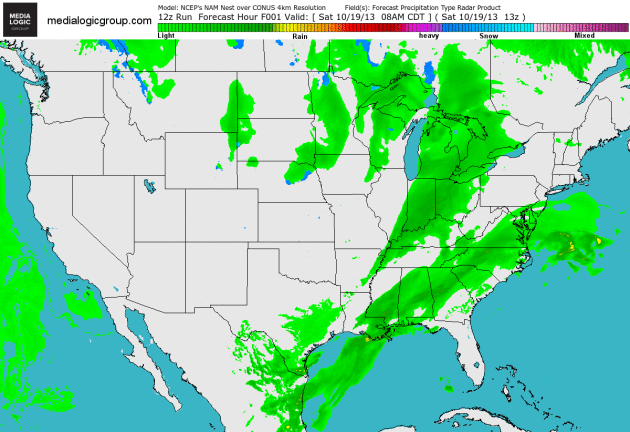
It's Clipper-Time Again. 4km. NAM model data shows a pinwheel of precipitation pushing across Minnesota today, rain starting and ending as a little slushy mix, especially central and northern Minnesota. I expect mostly rain in the Twin Cities, possibly ending as a few flurries tonight. Loop: NOAA and Ham Weather.
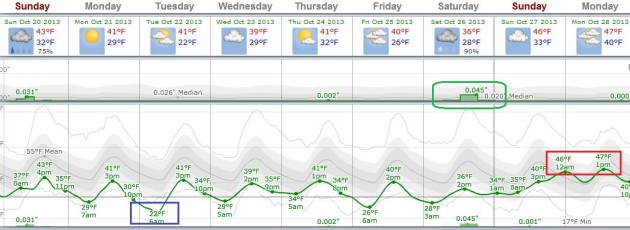
In Search Of October. It will look and feel more like early or mid November out there much of the week, afternoon highs struggling to top 40F into Friday, a slight warm-up by Sunday and Monday of next week, when 50F. isn't out of the question. Wow. That'll be fun. ECMWF data above shows a mostly-dry week for MSP, the best chance of a freeze Tuesday morning, maybe a slushy mix Saturday as milder air tries to push in from the Dakotas. Graph: Weatherspark.

MSP Snowfall During Federal Shut-Down Years:
76-77 43.6"
77-78 50.7"
78-79 68.4"
79-80 53.3"
81-82 95.0" - second snowiest
82-83 74.4"
83-84 98.6" - snowiest
84-85 72.7"
86-87 17.4" - fourth least snowiest
87-88 42.4"
90-91 43.6"
95-96 55.5"
Shutdown Average: 59.6"
1981-2010 Average: 55.5"
*
thanks to Media Logic meteorologist D.J. Kayer for performing these
calculations. If the forecast doesn't work out it's his fault. I wish I
could take credit for this brilliant idea of linking winter snowfall and
government shut-downs. I can't. Kudos to The Capital Weather Gang for making the connection and inspiring D.J. and me to run the numbers for the Twin Cities.
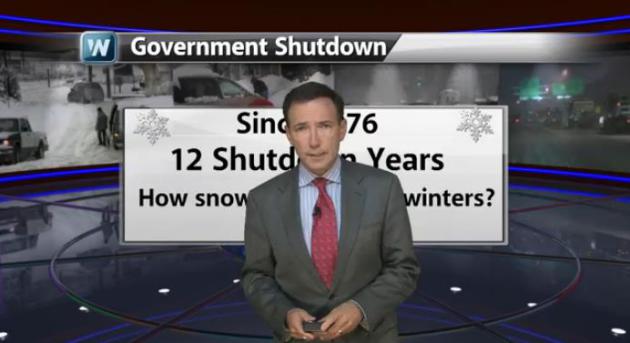
Bigfoot Made Me Do It.
I'm not suggesting there's an ironclad causal correlation between
government shut-downs and snow, but at this point nothing would surprise
me. When it comes to any long-range weather prediction buyer beware.
Everone wants to know what the weather will be like on Christmas Day,
but that doesn't mean the science can support it. Winters are trending
milder, so the (safer) bet would probably be another
slightly-milder-than-average winter for Minnesota. Snow? In recent years
about 1 in 3 winters have brought snowier than average (55") winters.
We had one last winter. Two in a row? Could we be that lucky? Don't hold
your breath. Here's an overview of today's edition of Climate Matters. I had way too much fun with this: "Weather
forecasts beyond ten, twelve, days should have warning labels!
Meteorologist Paul Douglas explains how long range forecasts have little
accuracy. An active hurricane season was predicted this year and we
have seen the quietest season since 1968. Long range winter forecasts
are just as tough."
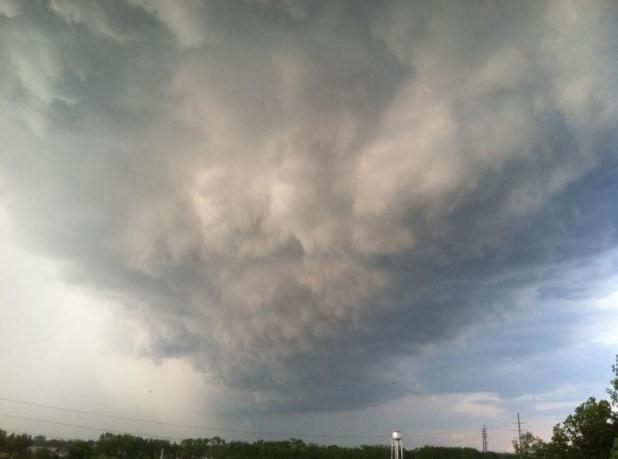
Wet Start To October. Here's an excerpt from Dr. Mark Seeley's weekly WeatherTalk Newsletter that caught my eye: "After
a relative dry start to the month, this October is turning into a
wetter than normal month with over two weeks yet to go. Significant
rainfall totals this week in combination with those that fell earlier in
the month have added up to over a month's worth at several locations.
Normal October precipitation values (1981-2010) generally range from 2.0
to 2.5 inches, but many observers are already reporting over 4 inches,
including Moorhead, Fergus Falls, Pelican Rapids, Melrose, Willmar,
Cloquet, Isle, Moose Lake, Zumbrota, and Austin. Some observers have
already had over twice normal monthly precipitation including Browns
Valley (5.23"), Onamia (5.46"), Caledonia (5.55"), Chatfield (6.10"),
Preston (6.73"), and Grand Meadow (7.08"). 2013 is the 4th wettest
October in history (back to 1887) at Grand Meadow already..."

Shut-Down Could Delay NOAA Satellites, Climate Report. Andrew Freedman at Climate Central has the story; here's the intro: "The 16-day government shutdown may have ripple effects throughout the government’s weather and climate programs. The National Oceanic and Atmospheric Administration
(NOAA) has begun assessing whether the shutdown will cause further
delays to its already troubled development of the next generation of
weather and climate satellites. The satellites, which were already running billions over budget and years behind schedule before the shutdown, are considered critical to maintaining the accuracy of U.S. weather and climate forecasts..."

Ask Paul. Weather-related Q&A:
When it comes to weather-related matters I trust your assessments more than anyone else in our neck of the woods (Mpls./St. Paul). I read your response to Joe from Eau Claire, and pardon if I'm a bit redundant, has cold weather moved in to stay for a few months? High's around 50 next weekend and possibly Halloween? Seems we always get a little reprieve from the first frosts. I know we ask a lot of crystal ball gazers such as yourself, tell me honestly though, how do the next few weeks look?
Thanks a lot,
Brad Stauffer from Minneapolis

Brad
- thanks for the kind words (are we related?) I would wager a very
small sum that we will see more breaks from the chill in the weeks
ahead. I do NOT think we're going to be consistently colder than average
into November. Unusually cold spells are often followed by warm-ups of
almost equal magnitude. I don't see much evidence of Indian Summer in
the extended GFS numbers (above), but I still think we'll see a few days
above 50 in early November.
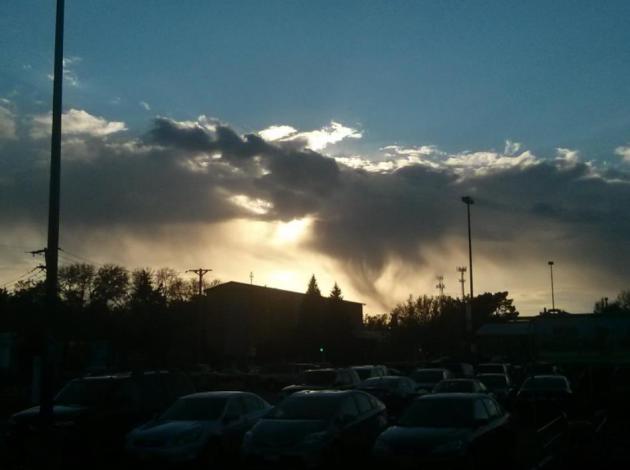
Paul,
I've never seen a cloud formation like this. What would cause this? I took the photo in South Mpls on Friday evening facing west.
Josh Downham, Minneapolis
Josh - thanks for a great example of "virga", illuminated by a low sun angle shining underneath the cloud base. Much of the rain is evaporating into drier air near the surface, leaving behind a cone-shaped swirl of rain drops, swept southeast by gusty winds near the ground. Virga is often mistaken for tornadoes from a distance, but the lack of rotation (and lightning nearby) is a tip-off that it's benign. That, and a dew point of 30 - that's a pretty good tip-off that tornadoes are the least of your concerns.

Raging Australian Wildfires Raise Questions About Climate Change, Emergency Preparedness. After record winter warmth fire season is coming (very) early to Australia - raising fears of another catastrophic fire year. The Christian Science Monitor has the story - here's a clip: "...More than 80 fires continue to burn across New South Wales, with over 20 blazes not yet contained, according to the Australian Broadcasting Corp. The early start to the bushfire season in New South Wales has prompted warnings that the state could face the same conditions that led to the 2009 fires in Victoria – the worst in Australian history. Those fires claimed 173 lives and caused more than $4 billion in damage..."
Photo credit: "In this photo provided by the New South Wales Rural Fire Service the remains of a structure are in a crumpled pile after a wildfire destroyed the building, at an unknown location in Australia, Thursday, Oct. 17, 2013. Nearly a hundred wildfires are burning across Australia's New South Wales state, more than a dozen of which are out of control, as unseasonably hot temperatures and strong winds fanned flames across the parched landscape." (AP Photo/New South Wales Rural Fire Service)
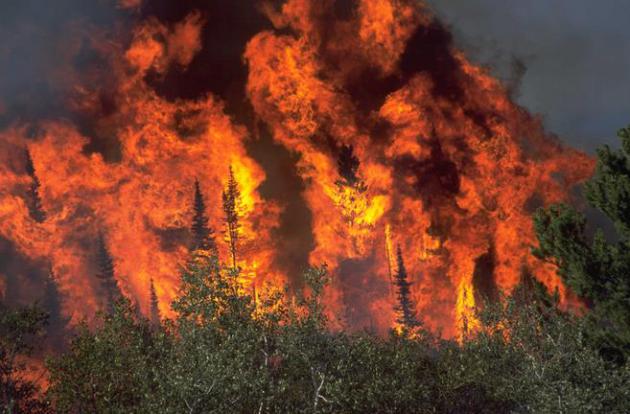
- The largest fire in Arizona’s history (2011’s Wallow Fire)
- Both the largest and most destructive fires in New Mexico’s history (2012’s Whitewater-Baldy Complex and Little Bear Fires, respectively)
- The most destructive fire in Texas’ history (2011’s Bastrop County Complex Fire)
- The first and second most destructive fires in Colorado’s history (2013’s Black Forest and 2012’s Waldo Canyon Fires, respectively)
- The third largest fire in California’s history (2013’s Rim Fire)



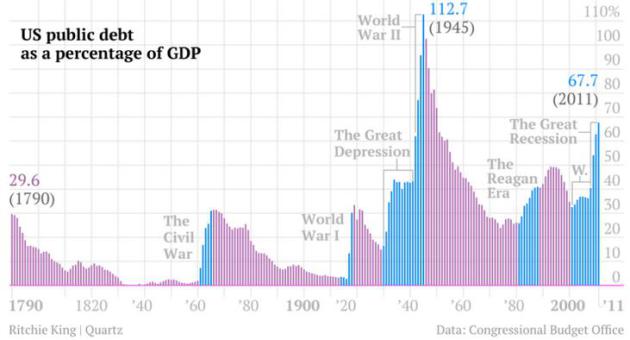

An Army Of Robot Baristas Could Mean The End Of Starbucks As We Know It.
Say it isn't so. Robots may be able to make a perfect latte, but what
about idle banter and meaningless chit-chat at the cash register, huh?
Here's a clip from Quartz: "Starbucks’
95,000 baristas have a competitor. It doesn’t need sleep. It’s precise
in a way that a human could never be. It requires no training. It can’t
quit. It has memorized every one of its customers’ orders. There’s never
a line for its perfectly turned-out drinks. It doesn’t require health insurance.
Don’t think of it as the enemy of baristas, insists Kevin Nater, CEO of
the company that has produced this technological marvel. Think of it as
an instrument people can use to create their ideal coffee experience.
Think of it as a cure for “out-of-home coffee drinkers”—Nater’s
phrase—sick of an “inconsistent experience...”
Photo credit above: "Finally, a barista you don't have to lie to about how your day is going." Briggo.

"Aeromobil": A Flying Car Reimagined.
I wonder if any of the current crop of flying car initiatives will get
off the ground - I hope so. This is one good-looking car/plane; details
from Gizmag: "There
is a saying in flying: “If it looks good, it will fly well.” Stefan
Klein, a designer from the Slovak Republic, has announced the first
flight of his Aeromobil Version 2.5, a flying car prototype he has been
developing over the last 20 years. This vehicle is a strikingly
beautiful design with folding wings and a propeller in the tail. But
will its flight capabilities match its looks?..."
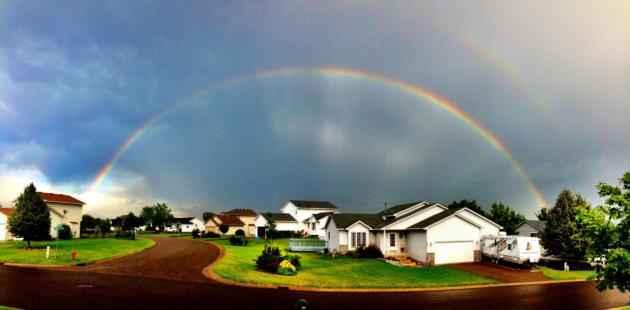
* photo above: WeatherNation TV meteorologist Todd Nelson.
Climate Stories...
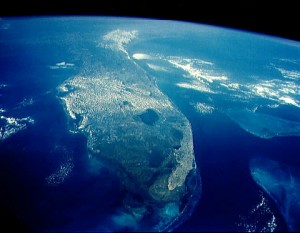
Rain Or No Rain, Beachfront Streets Flood Due To "Spring Tide". Here's a clip of a remarkable story at The Miami Herald,
where rising sea levels are already wreaking havoc. The city just sent a
team to the Netherlands to explore the possibility of building a
seawall, dikes or levees to keep the Atlantic out of South Beach. Here's
an excerpt: "...Rodriguez said the city is thinking of short-term
fixes to deal with the issue. “We’re looking at improving our sea walls
and raising some of them,” she said. In search of a long-term solution, a
delegation recently returned from the Netherlands, Rodriguez said, and
the city will determine which of that country’s strategies to hold back
high tides can be used here. “Some of their ideas we can do, others we
can’t as we are in different geographic areas,” Rodriguez said. The
current levels of high tide are caused by an astronomical event known as
“spring tide,” according to Chuck Caracozza, a meteorologist from the
National Weather Service..."
 How Do You Get People To Give A Damn About Climate Change?
Good question. It often hits home when it (literally) hits home, the
atmospheric equivalent of a 2x4 across the forehead. Here's an excerpt
from Mother Jones: "...The two researchers agree that political ideology—and in particular conservative fiscal or free market thinking—is an
overwhelming factor preventing acceptance of climate science. "A
position on climate change has become almost like a tribal totem," says
Lewandowsky. "I am conservative, therefore I cannot believe in climate
change." But the difference is that Lewandowsky thinks other factors can
mitigate this reality—including a consensus message that works, in
essence, through peer pressure. After all, who wants to fly in the face
of what 97 percent of experts have to say? "We know from my studies that
if you can only tell people about the consensus, that it does make a
huge difference to their belief," Lewandowsky says..." (Image above: Skeptical Science).
How Do You Get People To Give A Damn About Climate Change?
Good question. It often hits home when it (literally) hits home, the
atmospheric equivalent of a 2x4 across the forehead. Here's an excerpt
from Mother Jones: "...The two researchers agree that political ideology—and in particular conservative fiscal or free market thinking—is an
overwhelming factor preventing acceptance of climate science. "A
position on climate change has become almost like a tribal totem," says
Lewandowsky. "I am conservative, therefore I cannot believe in climate
change." But the difference is that Lewandowsky thinks other factors can
mitigate this reality—including a consensus message that works, in
essence, through peer pressure. After all, who wants to fly in the face
of what 97 percent of experts have to say? "We know from my studies that
if you can only tell people about the consensus, that it does make a
huge difference to their belief," Lewandowsky says..." (Image above: Skeptical Science).
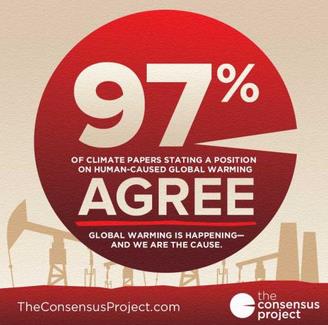
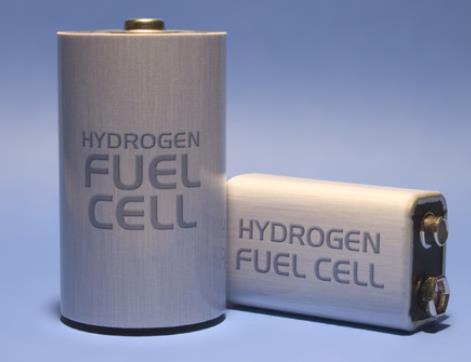
Nobody In The Fuel Cell Industry Has Ever Made A Profit - This CEO Could Be The First. Expensive pipedream or new energy source with massive potential? Here's a clip from Quartz: "The
fuel cell industry has been the next big thing for nearly as long as
it’s been around. Invented in the early 19th century, fuel cells are an
efficient and clean way to produce energy. Hydrogen (the fuel) is pumped
into a stack of various metals (the cell) in the form of natural gas or
biogas. A chemical reaction produces electricity, water, heat and a
negligible amount of carbon dioxide. Sounds great, right? That’s why
over a dozen companies work in the industry. They make everything from
multi-megawatt generators powering entire universities to little ones
that power cars. Just last month eBay’s Utah data center went online, run entirely on fuel cells made by Bloom, a private company..."

The Truth About Denial. Sharon Begley, the senior health and science correspondent at Reuters, has a long, but fascinating post at her web site; here's an excerpt: "...But
outside Hollywood, Manhattan and other habitats of the chattering
classes, the denial machine is running at full throttle—and continuing
to shape both government policy and public opinion. Since the late
1980s, this well-coordinated, well-funded campaign by contrarian
scientists, free-market think tanks and industry has created a
paralyzing fog of doubt around climate change. Through advertisements,
op-eds, lobbying and media attention, greenhouse doubters (they hate
being called deniers) argued first that the world is not warming;
measurements indicating otherwise are flawed, they said. Then they
claimed that any warming is natural, not caused by human activities. Now
they contend that the looming warming will be minuscule and harmless.
"They patterned what they did after the tobacco industry," says former
senator Tim Wirth, who spearheaded environmental issues as an under
secretary of State in the Clinton administration. "Both figured, sow
enough doubt, call the science uncertain and in dispute. That's had a
huge impact on both the public and Congress..."
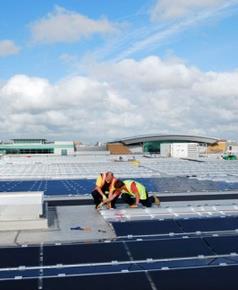
Solar Panels Are Sprouting On Business Rooftops Across The U.S. Here's an excerpt from an interesting story at The Denver Post.
Are companies doing this to be altruistic, because they care about the
environment? Maybe - but I would suggest that it has to do more with
saving money over the long term: "The 25 companies with the highest
total solar capacity as of August 2013 have deployed about 445 megawatts
at more than 950 different facilities, enough to power 73,400 American
homes. That’s up from 300 megawatts and 730 facilities in 2012,
according to 2013 “Solar Means Business”
report from the trade group Solar Energy Industries Association and
Vote Solar, a solar power advocacy group. The companies analyzed for the
report had deployed systems in 30 states and Puerto Rico. The way was
led by Walmart, Costco, Kohl’s and Apple..."
Photo credit above: "Workers install solar panels at Ikea".

Water Vapor In The Upper Atmosphere Amplifies Global Warming, Says New Study. NOAA has the story - here's the introduction: "A new study
shows that water vapor high in the sky and the temperature at the
Earth’s surface are linked in a “feedback loop” that further warms our
climate. Published today, this study gives the first estimate of the
size of the feedback’s effect, which may help researchers improve
modeling to better understand climate change. “Water vapor in the
stratosphere increases in tandem with increases in the Earth’s surface
temperature,” said coauthor Sean Davis, a scientist at the Cooperative
Institute for Research in Environmental Sciences working at the NOAA
Earth System Research Laboratory in Boulder, Colo. “Because water vapor
is a greenhouse gas, this generates additional warming. We show that this feedback loop could be about 10% of the climate warming from all greenhouse gases...”

Iowa Scientists: Climate Change Affecting Farming. Here's an excerpt of a story at seattlepi.com: "Several
Iowa scientist are releasing a report on how they believe climate
change is affecting farmers. A report "Iowa Climate Statement 2012:
Climate Change Threatens Iowa Farms" will be released Friday at Drake University. Researchers and professors from Iowa State University, the University of Iowa, the University of Northern Iowa, Drake, and Mount Mercy University
will release the report. The report looks at the extreme weather this
year marked by the wettest spring on record followed by the
second-driest July through September ever..."

Michael Mann, Off Battlefield, Discusses "Climate Wars". Andrew Freedman has the story for Climate Central; here's the intro: "Michael
E. Mann sounds remarkably upeat these days considering that he has been
under assault for more than a decade by investigations, criticisms, and
even death threats for his work as a climate scientist. Perhaps he’s
been buoyed by the fact that the Virginia Supreme Court recently halted
State Attorney General and Republican gubernatorial candidate Ken
Cuccinelli’s investigation into Mann’s use of state funds for climate
research. That case, which was widely viewed as politically motivated, galvanized the climate science community because of the threat it posed to academic freedom and scientific inquiry..."

Climate Change Panel Features Varying Perspectives With Common Goal. Wisconsin's Badger Herald has the story - here's a clip: "...The
benefits of cleaner air, because of public health costs, are you gain
$49 on average from every ton of carbon dioxide you remove … the cost of
cleaner energy is $30 on average per ton of carbon dioxide removed,”
Patz said, drawing on evidence from a study conducted by fellow panelist
Gregory Nemet, associate professor in Public Affairs and Environmental
Studies. The gains of moving to cleaner energy clearly outweigh the
costs, Patz said. Nemet said there is an exponential increase in
temperature projected for the next 100 years. “We need to decarbonize at
a rate of 5 percent or 6 percent per year,” Nemet said. “You can’t deny
that people are burning coal. It’s cheap, domestic and extremely carbon
intensive...”
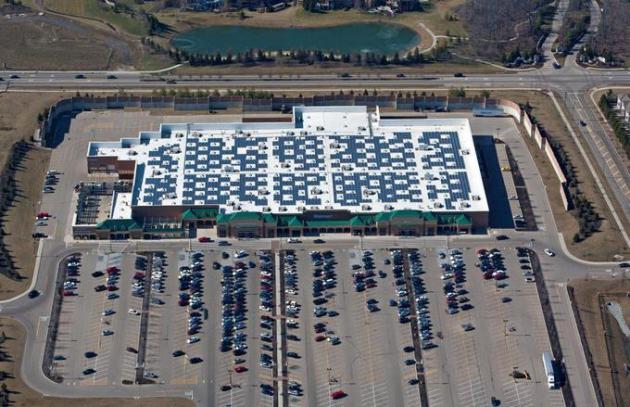
Walmart Leads Companies Investing In Solar.
Are they doing it to be altruistic, because it's the right thing to do,
for customers, shareholders and the environment? Possibly, but I
suspect it's because over the long term they can operate with greater
efficiency, save money, and pass those savings along, making them even
more competitive. Smart. Here's a clip from Daily Finance: "Solar
continues to "go through the roof" in the U.S. commercial sector. The
Top 25 corporate solar users nationwide have deployed 445 MW of capacity
thus far this year, up 48% over the same period in 2012, according to a
report released this week. And leading the pack for the second
consecutive year is America's largest retailer, Wal-Mart
, with 89 megawatts of photovoltaic capacity installed at 215 company
facilities in 11 states. Those are the findings of "Solar Means
Business 2013" study, conducted by the U.S. Solar Energy Industries
Association, a trade group based in Washington, DC, in cooperation with
the Vote Solar Initiative, a non-profit organization based in San
Francisco..."
Photo credit above: solarbuildermag.com.